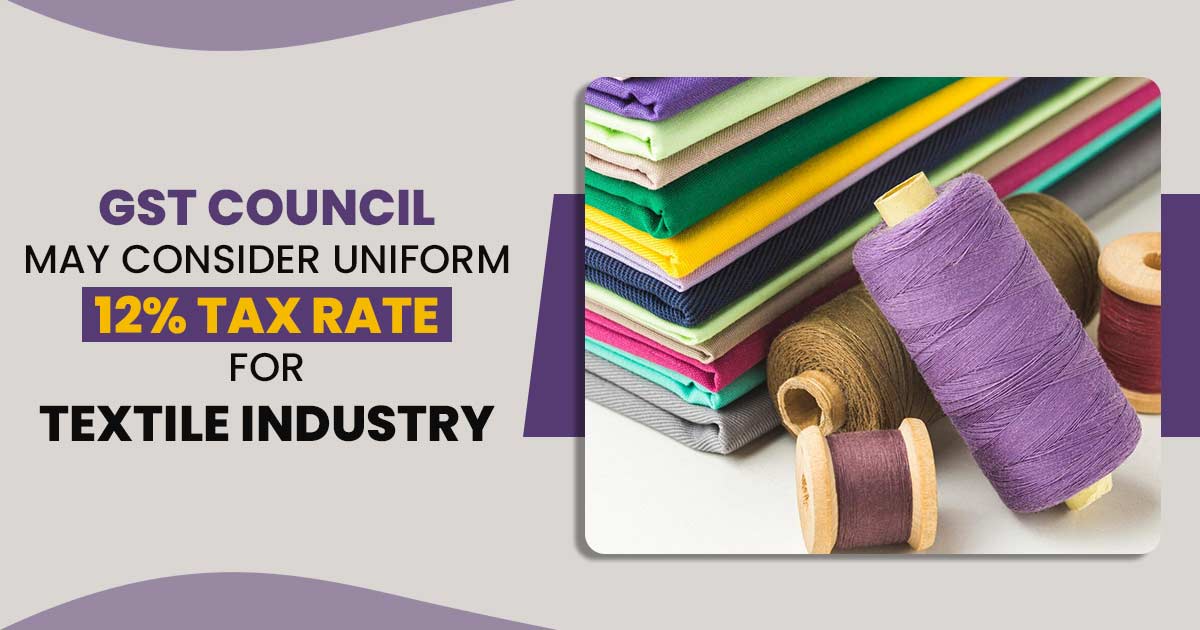
In the upcoming Phase of GST reforms, the GST council may propose to introduce a 12% Goods and Services Tax (GST) across the textile value chain, as per sources.
It is the Centre’s plan that may create part of the Group of Ministers’ (GoM) rate rationalisation report. It sought to rectify the inverted duty structure that has affected the sector for so many years. There is a 5% tax on cotton, 12% on yarn, and 18% on synthetic fibres and chemicals. A 5% GST is applicable on the Garments that cost below Rs 2000, while a 12% tax is there on the garments that cost more than Rs 2000.
“Correction of textile inverted duty is pending. Cotton is at 5 percent – it’s a farm produce logic, but it is not working. It is no longer delivering the intended benefit in the context of GST. Yarn is at 12 percent. The proposal is to bring everything to 12 percent,” the source cited.
“These issues are kind of… whatever decision probably happens more or less by September,” he expressed.
Understanding the Logic Behind Farm Produce Pricing
As cotton stems from a primary agricultural commodity, therefore there is a 5% GST is charged on it. Under India’s GST regime, farm produce and agricultural inputs are generally subject to lower tax rates, commonly 0% or 5%, to ensure the affordability of food and fibre, shield farmers from tax burdens, and encourage agro-processing activities.
There is a 5% tax on the cotton as it is a farm output, under the assumption that it shall benefit the farming community and keep basic textile raw materials inexpensive.
However, the disparity in tax rates has resulted in an inverted duty structure, causing working capital to be locked in refund processes, disrupting pricing throughout the value chain, and discouraging new investments.
Threshold Limit for The Garment Sector
The proposal may also suggest eliminating the price-based threshold for garments and introducing a uniform 12% GST rate across all products, irrespective of their value.
“Garments up to Rs 2,000, a threshold is there. Make everything at 12 percent regardless of any threshold for simplification, it may be offered. As it is, it’s not a levy on the farmers, it is a levy on the buyer,” the source cited.
The present rate structure distorts the costing and affects the working capital flows because of the reliance on inverted duty refunds, which the government is aiming to limit.
“If inversion is there, investments will not come. Inverted duty refund should be stopped… working capital is used. Overall, it pushes the price up. It’s a cleaner design – don’t distort the rate structure,” as per the source.
Read Also: Textile Merchants Urge State FM to Oppose Proposed GST Changes at Upcoming Council Meeting
Widespread Consumer Demand
More tax is there on Synthetic products, which have a large share of mass consumption, even with their rising relevance in the Indian textile mix.
“If at all we have to put the burden on the user, then there is a need to reduce the rate on polyesters and synthetics. That is what is used by the masses. Then they blend it with cotton. That is how the chain is. But the rate structure is reverse,” the source quoted.
Under the source, it emphasised the whole synthetic value chain. There is an 18% tax on chemicals, their fibre is at 18 per cent, and yarn is at 12 per cent. The proposal seems to be for a 12% rate. We must clean up else there are hidden costs. Money gets stuck. Also, the industry is unable to compete.
To ease the GST structure, the same move has been made, also it is for reducing the hidden costs and rectifying the global competitiveness of the textile industry of India.
Important: GST Impact on Textile Industry in India
Towards the inverted duty structure, the textile industry has shown concerns for a longer time, particularly in the synthetic segment, which has deterred investment and hurt export competitiveness. A constant rate, if executed, shall ease the compliance, reduce refund dependency, and draw new capital into textile manufacturing.
Source: Moneycontrol.com